Unveiling the Antelope: Nature’s Diverse and Dynamic Hoofed Marvels
Step into the vast grasslands, dense forests, or arid deserts of the Old World, and you are likely to encounter one of nature’s most captivating and diverse groups of mammals: the antelope. Far from a single species, the term “antelope” encompasses a breathtaking array of hoofed animals, each a testament to evolution’s ingenuity. From the towering eland to the diminutive royal antelope, these creatures embody grace, speed, and remarkable adaptability, playing crucial roles in their ecosystems and captivating human imagination for millennia.
This comprehensive guide delves into the fascinating world of antelopes, exploring their biology, behavior, habitats, and their intricate dance with both the natural world and human civilization. Prepare to discover why these magnificent animals are so much more than just “deer like” creatures.
What Exactly is an Antelope?
While the term “antelope” is widely used, it is not a precise scientific classification like “cat” or “dog.” Instead, it is a broad, somewhat informal grouping of ruminant mammals belonging to the family Bovidae, which also includes cattle, goats, and sheep. What sets most antelopes apart are several key characteristics:
- Permanent Horns: Unlike deer, which shed and regrow antlers annually, antelopes possess permanent horns. These bony structures grow from the skull, are often unbranched, and are typically covered in a keratin sheath. Both males and sometimes females can have horns, varying greatly in shape, size, and texture across species.
- Ruminant Digestion: Like all bovids, antelopes are ruminants, meaning they have a four-chambered stomach that allows them to efficiently digest tough plant material through fermentation. This process, involving chewing cud, extracts maximum nutrients from their fibrous diet.
- Even-Toed Ungulates: Antelopes are even toed ungulates, possessing two main hooves on each foot, a common trait among cloven hoofed animals.
- Old World Distribution: With the exception of the North American pronghorn (which, despite its name and appearance, is not a true antelope but belongs to its own unique family, Antilocapridae), true antelopes are native to Africa and Eurasia.
The sheer diversity within this group is astounding, showcasing a spectrum of sizes, colors, and adaptations that allow them to thrive in an incredible range of environments.

A World of Antelopes: Diversity in Form and Function
The antelope family tree is vast, encompassing over 90 species. This incredible variety is a testament to their evolutionary success. Here are just a few examples illustrating their remarkable range:
- The Giants: The Eland, the largest antelope, can stand over six feet tall at the shoulder and weigh more than 2,000 pounds. These powerful animals are found in eastern and southern Africa.
- The Speedsters: The Springbok and Thomson’s Gazelle are renowned for their incredible speed and agility, capable of reaching bursts of 50 to 60 miles per hour to escape predators on the open plains.
- The Forest Dwellers: Species like the Bongo, with its striking reddish brown coat and spiraling horns, are elusive inhabitants of dense African forests, perfectly camouflaged amidst the dappled light.
- The Desert Survivors: The Addax, or white antelope, is a master of desert survival, capable of living for extended periods without drinking water, obtaining moisture from the plants it eats. Its broad hooves prevent it from sinking into soft sand.
- The Water Lovers: The Waterbuck, as its name suggests, often seeks refuge in water to escape predators, using its waterproof coat to its advantage.
- The Tiny Ones: The Royal Antelope, found in West Africa, is one of the smallest antelopes, standing less than a foot tall and weighing only a few pounds.
This diversity highlights how antelopes have adapted to fill almost every available niche within their geographical range.
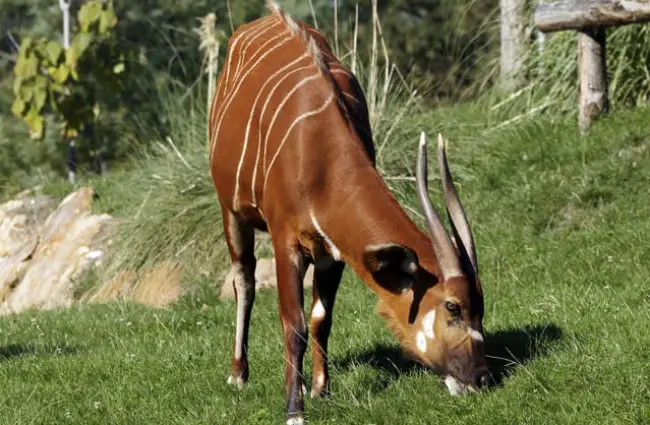
Where the Wild Things Are: Antelope Habitats and Distribution
For the aspiring zoologist or the dedicated animal lover hoping to spot an antelope in its natural environment, understanding their habitat is paramount. Antelopes are primarily found across Africa and parts of Asia, occupying an astonishing array of biomes.
- African Savannas and Grasslands: This is arguably the most iconic antelope habitat. Vast herds of Wildebeest, Gazelles, Topi, and Impala roam these open plains, constantly on the move in search of fresh grazing. The Serengeti and Maasai Mara ecosystems are prime examples, offering unparalleled opportunities for wildlife viewing.
- Deserts and Semi Arid Regions: Species like the Addax, Oryx, and Gemsbok have evolved incredible adaptations to survive in harsh, water scarce environments, including specialized kidneys and the ability to tolerate extreme temperatures. The Sahara and Arabian deserts are home to these resilient species.
- Forests and Woodlands: Dense tropical rainforests and woodlands are home to more elusive species such as the Bongo, Bushbuck, and various Duikers. These antelopes are often solitary or live in small family groups, relying on camouflage and stealth. Finding them requires patience and keen observation skills.
- Mountains and Rocky Terrain: Some antelopes, like the Klipspringer, are agile climbers, perfectly adapted to rocky outcrops and mountainous regions. Their specialized hooves provide excellent grip on uneven surfaces. The Drakensberg Mountains in Southern Africa are a good place to look for such species.
- Wetlands and Riverine Areas: The Waterbuck and Sitatunga are often found near water sources, utilizing reeds and swamps for cover and as an escape route from predators.
Tips for Finding Antelopes in the Wild:
- Location: Focus on national parks and wildlife reserves in Africa (e.g., Serengeti, Kruger, Etosha, Maasai Mara) or specific Asian reserves for species like the Blackbuck.
- Time of Day: Many antelopes are most active during the cooler parts of the day, early morning and late afternoon, when they graze. Midday heat often sees them resting in shade.
- Guided Safaris: For the best chances, especially in Africa, a guided safari with experienced trackers is highly recommended. They know the territories and behaviors of local antelope populations.
- Patience and Observation: Look for movement in the grass, listen for alarm calls, and scan the horizon. Binoculars are essential.

Life on the Plains (and Forests!): Antelope Diet and Feeding Strategies
Antelopes are primarily herbivores, and their diet largely consists of plant material. However, their specific feeding strategies vary significantly depending on the species and their habitat.
- Grazers: Many savanna antelopes, such as Wildebeest, Topi, and Zebra (though not an antelope, they often share grazing areas), are grazers. They primarily consume grasses, often moving in large herds to find fresh pastures. Their broad muzzles are well suited for cropping large quantities of grass.
- Browsers: Forest dwelling antelopes like Duikers and Kudu are typically browsers. They feed on leaves, shoots, fruits, and flowers from shrubs and trees. Their more pointed muzzles allow them to selectively pick out nutritious plant parts.
- Mixed Feeders: Some species, like the Impala, are mixed feeders, adapting their diet based on seasonal availability. They will graze on grasses during the wet season and browse on leaves and shoots during the dry season. This flexibility is a key to their success in varied environments.
The ruminant digestive system is crucial for all antelopes, allowing them to break down cellulose and extract nutrients from fibrous plant matter that most other animals cannot. This efficient digestion means they can survive on relatively low quality forage, a significant advantage in many of their habitats.
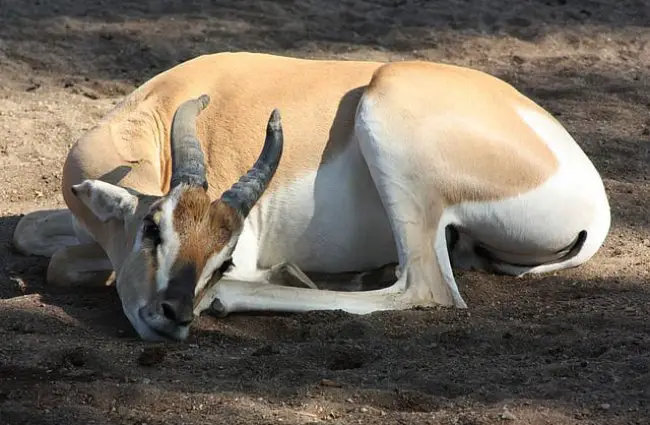
The Dance of Life: Antelope Mating and Reproduction
Antelope reproduction strategies are as diverse as the species themselves, influenced by social structure, habitat, and predator pressure. However, some general patterns emerge.
- Mating Systems:
- Polygynous: Most antelope species are polygynous, meaning one male mates with multiple females.
- Territorial Males: In many species, males establish and defend territories, attracting females to mate within their boundaries. Examples include Impala and Wildebeest. These territories often contain valuable resources like food or water.
- Harem Holders: Some males, like those of the Waterbuck, gather and defend a group of females, known as a harem.
- Lekking Behavior: A fascinating strategy seen in species like the Topi and Ugandan Kob involves males gathering in specific areas called “leks.” Here, they display to attract females, with dominant males occupying central, highly coveted spots.
- Gestation and Birth: Gestation periods vary widely, from around 4 to 5 months for smaller species like Duikers to 8 to 9 months for larger antelopes like the Eland. Most antelope species give birth to a single calf, though twins are rare but possible.
- Calf Rearing:
- Hiders: Many antelope mothers, particularly those of smaller or solitary species, are “hiders.” They give birth in secluded spots, leaving their camouflaged calf hidden for its first few weeks while they graze nearby, returning only to nurse. This minimizes the calf’s scent and movement, reducing predator detection.
- Followers: Larger, herd dwelling species, like Wildebeest and Gazelles, often have “follower” calves. These newborns are precocial, meaning they are able to stand and run within minutes or hours of birth, quickly joining the herd for protection in numbers.
- Sexual Maturity: Antelopes reach sexual maturity at varying ages, typically between one and three years old, depending on the species and environmental conditions.
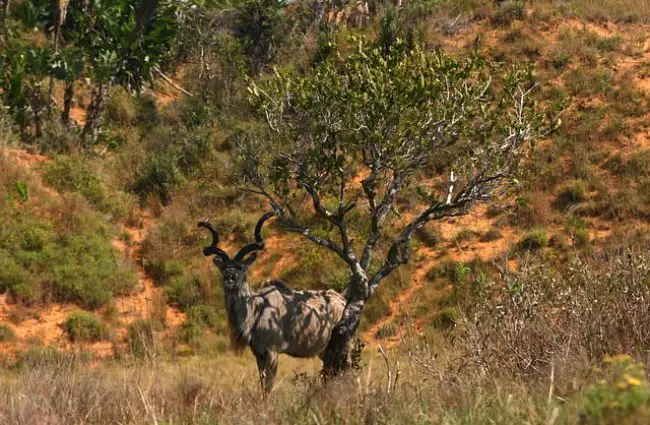
Evolution’s Masterpiece: A Glimpse into Antelope History
The evolutionary journey of antelopes is a compelling story of adaptation and diversification. Their lineage traces back millions of years, with the earliest bovid ancestors appearing in Eurasia during the Miocene epoch, roughly 20 to 25 million years ago. These early forms were likely small, forest dwelling creatures.
- Diversification in Africa: As the African continent experienced significant climatic and geological changes, particularly the expansion of grasslands and savannas, antelopes underwent a massive adaptive radiation. This led to the explosion of diverse forms we see today, each specialized for different niches.
- Adaptations for Survival: Over millennia, antelopes evolved a suite of adaptations to thrive in their environments:
- Speed and Agility: Crucial for escaping predators on open plains.
- Camouflage: Striped, spotted, or uniformly colored coats help them blend into their surroundings.
- Keen Senses: Excellent eyesight, hearing, and smell are vital for detecting threats.
- Specialized Horns: Used for defense against predators, sparring with rivals, and display during mating rituals.
- Digestive Efficiency: The ruminant stomach allowed them to exploit abundant, but often tough, plant resources.
- Fossil Record: The fossil record provides evidence of numerous extinct antelope species, showcasing the continuous process of evolution and natural selection that has shaped these magnificent animals. Understanding their evolutionary history helps us appreciate their current ecological roles and the challenges they face today.
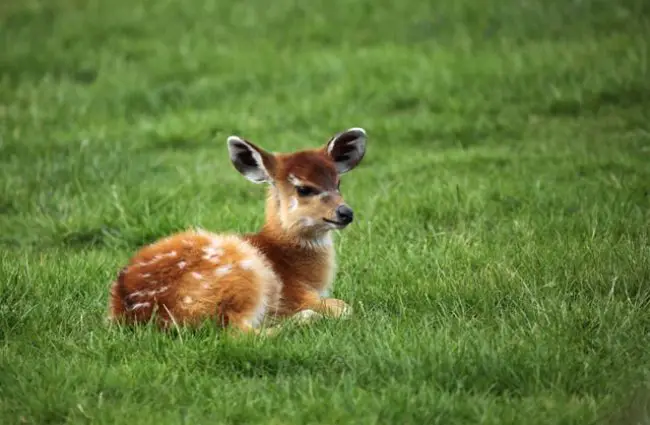
Antelopes in the Web of Life: Ecosystem Contributions and Interactions
Antelopes are not just beautiful creatures; they are cornerstones of their ecosystems, playing vital roles that ripple through the entire food web.
- Primary Consumers: As herbivores, antelopes are primary consumers, converting plant matter into biomass. This process is fundamental to energy flow within their ecosystems. Their grazing and browsing habits influence plant community composition and structure, preventing overgrowth and promoting biodiversity.
- Prey for Predators: Antelopes form a critical food source for a wide array of predators, including lions, leopards, cheetahs, wild dogs, hyenas, and crocodiles. This predator prey dynamic is essential for maintaining healthy predator populations and ensuring natural selection continues to favor the fittest antelopes.
- Seed Dispersal: By consuming fruits and then dispersing seeds through their droppings, some browsing antelopes contribute to plant propagation and forest regeneration.
- Nutrient Cycling: Their waste products return vital nutrients to the soil, enriching it and supporting plant growth.
- Symbiotic Relationships: Antelopes often form symbiotic relationships with other species. For instance, oxpecker birds frequently perch on antelopes, feeding on ticks and other parasites, providing a cleaning service while also acting as an alarm system for approaching danger.
- Competition: Antelopes often compete with other herbivores, such as zebras and buffalo, for grazing resources. This competition can lead to spatial or dietary partitioning, where different species utilize different parts of the same habitat or consume different types of vegetation.
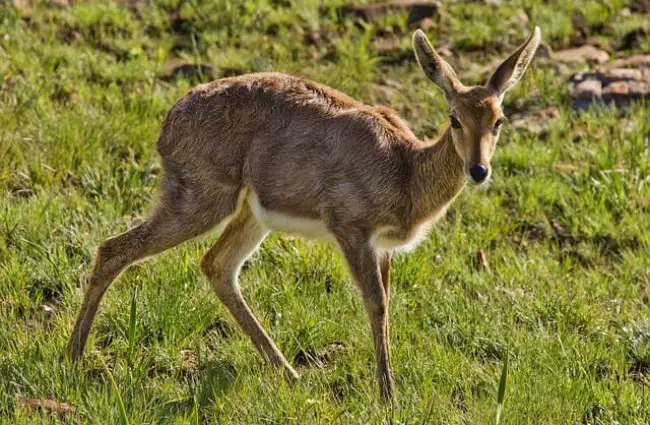
Antelopes and Us: Human Interaction, Culture, and Conservation
The relationship between humans and antelopes is long and complex, spanning from ancient cultural reverence to modern conservation challenges.
- Contribution to Human Culture:
- Art and Mythology: Antelopes have been depicted in cave paintings and ancient art for millennia, symbolizing grace, speed, and the spirit of the wild. Many African cultures feature antelopes in their folklore, myths, and ceremonies, often associating them with fertility, agility, or spiritual guidance.
- Symbolism: The horns of antelopes are often used in traditional crafts and as symbols of status or power.
- Interaction with Humans:
- Hunting: Historically, antelopes have been a significant source of food for human populations across Africa and Asia. Sustainable hunting practices were often part of traditional cultures. However, unregulated hunting and poaching remain a threat to many species today.
- Tourism: Wildlife tourism, particularly safaris in Africa, generates substantial revenue for local economies and provides a powerful incentive for conservation efforts. Antelopes are a major draw for tourists.
- Agriculture and Land Use: As human populations expand, antelope habitats are increasingly fragmented or converted for agriculture, livestock grazing, and human settlements. This habitat loss is the single greatest threat to many antelope species.
- Disease Transmission: In some areas, antelopes can be susceptible to diseases carried by domestic livestock, and vice versa, leading to complex management challenges.
- Conservation Status:
- Many antelope species face significant conservation challenges. The IUCN Red List categorizes species from “Least Concern” to “Critically Endangered” and “Extinct.”
- Species like the Addax and Saiga Antelope are critically endangered, primarily due to habitat loss, poaching, and climate change.
- Conservation efforts include establishing protected areas, anti poaching initiatives, community based conservation programs, and captive breeding programs.
Encountering Antelopes in the Wild: A Hiker’s Guide
For hikers and nature enthusiasts venturing into antelope territory, responsible behavior is key to both your safety and the well being of the animals.
- Observe from a Distance: Always maintain a respectful and safe distance. Antelopes are wild animals and can be unpredictable, especially if they feel threatened. Use binoculars or a telephoto lens for close up views.
- Do Not Approach: Never attempt to approach, feed, or touch an antelope, even if it appears calm or curious. Feeding wild animals can alter their natural behavior, make them dependent on humans, and expose them to diseases.
- Stay Calm and Quiet: Move slowly and quietly. Sudden movements or loud noises can startle animals, causing them to flee or, in rare cases, become defensive.
- Understand Their Behavior:
- Alarm Signals: Watch for signs of alarm, such as a raised head, ears swiveling, snorting, or a stiff legged gait (stotting or pronking). If you see these, you are too close and should slowly retreat.
- Mothers and Calves: Be especially cautious around mothers with young calves. They can be very protective.
- Respect Their Space: If an antelope changes its behavior because of your presence, you are too close. Give them space.
- Never Block Escape Routes: Ensure animals always have a clear path to retreat.
- Follow Park Rules: Adhere to all rules and regulations of national parks or wildlife reserves, including staying on marked trails and respecting speed limits in vehicles.
By following these guidelines, you can enjoy a memorable and safe encounter with these magnificent creatures without causing them stress or harm.
Caring for Antelopes in Captivity: A Zookeeper’s Perspective
Caring for antelopes in a zoological setting requires specialized knowledge and dedication to replicate their natural environment and meet their complex needs. For zookeepers, the tasks are multifaceted:
- Enclosure Design and Maintenance:
- Space: Antelopes, especially larger or herd dwelling species, require ample space for grazing, running, and social interaction. Enclosures must be large and well designed.
- Habitat Simulation: Replicating natural habitat elements, such as varied terrain, shade structures, water features, and appropriate vegetation, is crucial for physical and psychological well being.
- Security: Strong, escape proof fencing is paramount for safety.
- Cleanliness: Regular cleaning of enclosures to prevent disease and maintain hygiene is essential.
- Diet and Nutrition:
- Species Specific Diets: Diets must be tailored to the specific species, considering whether they are grazers, browsers, or mixed feeders. This often involves a combination of high quality hay, browse (fresh tree branches and leaves), and specialized pelleted feeds.
- Forage Variety: Providing a variety of forage encourages natural foraging behaviors.
- Water: Constant access to fresh, clean water is critical.
- Social Structure:
- Herd Dynamics: Understanding and managing the social dynamics of herd dwelling species is vital. Introducing new individuals or managing breeding groups requires careful planning to avoid aggression or stress.
- Solitary Species: For solitary species, ensuring they have adequate privacy and enrichment is important.
- Veterinary Care and Monitoring:
- Regular Health Checks: Routine veterinary examinations, vaccinations, and parasite control are standard.
- Behavioral Monitoring: Zookeepers constantly observe antelope behavior for any signs of illness, injury, or stress. Early detection is key to successful treatment.
- Hoof Care: Regular hoof trimming may be necessary for some species to prevent overgrowth and associated problems.
- Enrichment:
- Providing environmental enrichment, such as puzzle feeders, novel browse, or varied substrates, helps stimulate natural behaviors and prevents boredom.
- What to Avoid:
- Overcrowding: This leads to stress, aggression, and increased disease transmission.
- Inappropriate Diet: Feeding incorrect or unbalanced diets can lead to severe health issues.
- Lack of Stimulation: Barren enclosures without enrichment can result in stereotypic behaviors and poor welfare.
- Unnecessary Human Interaction: While zookeepers build relationships with their animals, excessive or inappropriate human interaction can stress antelopes and reduce their natural behaviors.
The goal of captive care is to provide an environment that promotes physical health, psychological well being, and allows for natural behaviors, often contributing to vital conservation breeding programs.
Fascinating Antelope Facts
Here is a huge list of interesting facts about antelopes that highlight their unique adaptations and behaviors:
- The Sitatunga has splayed hooves that allow it to walk on marshy ground without sinking.
- Some antelopes, like the Gerenuk, can stand on their hind legs to reach higher browse.
- The Saiga Antelope has a distinctive, bulbous nose that helps filter dust and warm cold air in its harsh steppe habitat.
- The Impala can leap over 10 feet high and cover distances of up to 30 feet in a single bound.
- Wildebeest undertake one of the largest terrestrial migrations on Earth, with millions of individuals moving across the Serengeti Maasai Mara ecosystem.
- The horns of a Kudu can grow up to six feet long in a majestic spiral.
- Antelopes have excellent peripheral vision due to the placement of their eyes on the sides of their heads, allowing them to scan for predators.
- Many antelope species use scent marking, rubbing glands on their faces or feet against vegetation, to communicate territory and reproductive status.
- The Dik Dik, one of the smallest antelopes, gets its name from the alarm call it makes when startled.
- Antelopes are often indicators of ecosystem health; their presence and population numbers can reflect the overall condition of their habitat.
- Some antelopes, like the Springbok, engage in a behavior called “pronking” or “stotting,” where they leap into the air with all four legs stiff, possibly to signal their fitness to predators.
- The Oryx can raise its body temperature to avoid overheating in desert environments, a unique physiological adaptation.
Conclusion: A Legacy of Resilience and Wonder
The world of antelopes is a vibrant tapestry of life, showcasing an incredible spectrum of adaptations, behaviors, and ecological roles. From the vast plains of Africa to the remote forests of Asia, these hoofed marvels continue to inspire awe with their grace, speed, and sheer will to survive. They are not merely components of their ecosystems; they are integral threads, shaping landscapes, feeding predators, and enriching the biodiversity of our planet.
As we continue to learn more about these fascinating creatures, it becomes ever clearer that their future, like so many other species, is intertwined with our own actions. Understanding, appreciating, and actively working towards their conservation ensures that the legacy of the antelope, a legacy of resilience and wonder, will continue for generations to come.

![Red Angus Closeup of a beautiful Red Angus cowPhoto by: U.S. Department of Agriculture [pubic domain]https://creativecommons.org/licenses/by/2.0/](https://animals.net/wp-content/uploads/2020/03/Red-Angus-4-238x178.jpg)




![Red Angus Closeup of a beautiful Red Angus cowPhoto by: U.S. Department of Agriculture [pubic domain]https://creativecommons.org/licenses/by/2.0/](https://animals.net/wp-content/uploads/2020/03/Red-Angus-4-100x75.jpg)

